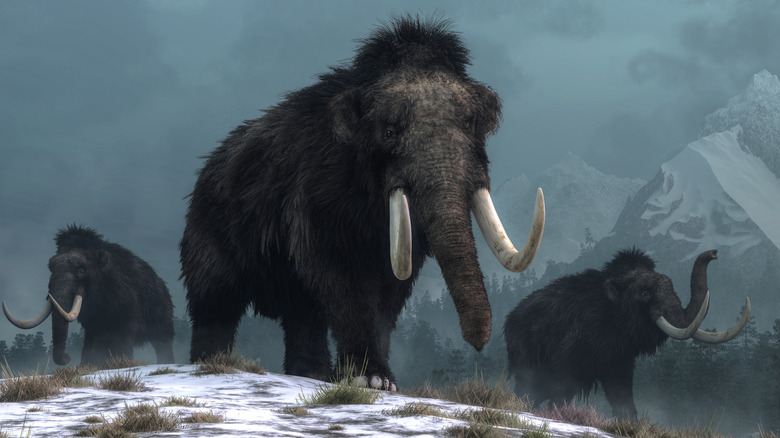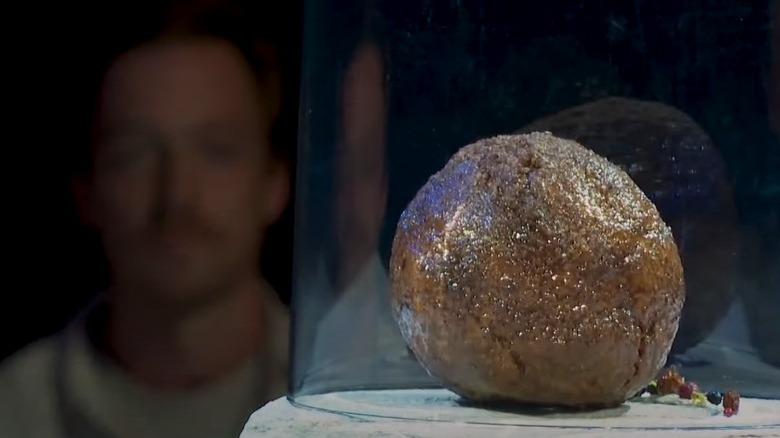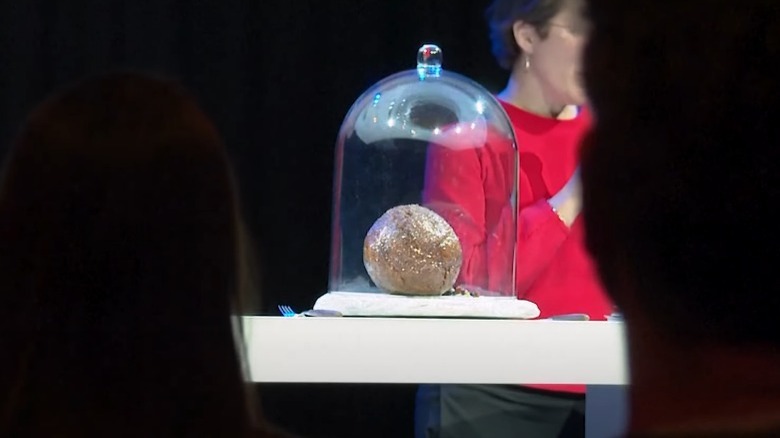Woolly Mammoth Is On The 'Menu' For An Australian Food Startup
As cloning a mammoth enters the realm of reality from the world of science fiction, according to CNN, an Australian food startup has taken it one step further: What might mammoth meat taste like? (Scientists, after all, have already cooked up a batch of 50,000-year-old steppe bison stew). Whether or not the prospect of eating lab-manufactured mammoth meat sounds appetizing, if the cultured mammoth meat developed by a company called Vow proves viable, which they call a "mammoth meatball," it all might just show a way to more sustainably produce meat in the future.
The "mammoth meatball," which as of this report is not commercially available, isn't really mammoth meat at all. It's closer to imitation lamb with mammoth DNA mixed into it. What made the project possible are advances in DNA extraction technology from well-preserved ancient mammoth remains recovered from melting permafrost, the same reason mammoth — a relative of the modern elephant that went extinct 4,000 to 10,000 years ago, according to National Geographic — might one day be revived. On the mammoth meat project, James Ryall from Vow said, "My biggest hope for this project is ... that a lot more people across the world begin to hear about cultured meat."
Don't expect 'mammoth nuggets' anytime soon
Unlike the scientist who made stew from steppe bison meat, there's no actual mammoth flesh in Vow's meatball (pictured), nor at the time of this writing is the product known to be fit for human consumption. So, how do you make a meatball — with even a little bit of mammoth protein in it — with no actual meat? DNA sequencing, of course. All mammals have a protein called myoglobin in their bodies which helps mammal meat — well, taste "meaty." Vow scientists took the mammoth DNA sequence for myoglobin from publicly available mammoth DNA sequencing.
To that protein, scientists added a little genome info from a modern-day African elephant — the wooly mammoth's living relative — to the recipe, and then injected it all into a sheep muscle cell, before they let it all "simmer" in a lab — et voilà! A lamb-mammoth meatball was born. In truth, there's only one out of 25,000 genes in the product that belongs to a mammoth, but hey — it's a start. On why nobody tried a bite, James Ryall from Vow told CNN: " ... [W]e were hesitant to immediately try and taste because we're talking about a protein that hasn't existed for 5,000 years. I've got no idea what the potential allergenicity might be of this particular protein."
The mammoth meatball went on display in Amsterdam
The reveal of the mammoth meatball developed by Vow took place at NEMO Science Museum in Amsterdam, Reuters reports. There are currently no plans to mass-produce the product. Instead, the mammoth meatball is simply an attention-grabbing way on Vow's part to highlight the emerging worldwide lab-grown-meat industry, which many experts say could help defray the environmental impact of traditional meat production.
As Vow founder Tim Noakesmith told The Associated Press: "We wanted to get people excited about the future of food being different to potentially what we had before. That there are things that are unique and better than the meats that we're necessarily eating now, and we thought the mammoth would be a conversation starter and get people excited about this new future." And although there are no plans to taste the meatball, Noakesmith said, " ... [It's] super fascinating to think that adding the protein from an animal that went extinct 4,000 years ago gave it a totally unique and new aroma, something we haven't smelled as a population for a very long time."


